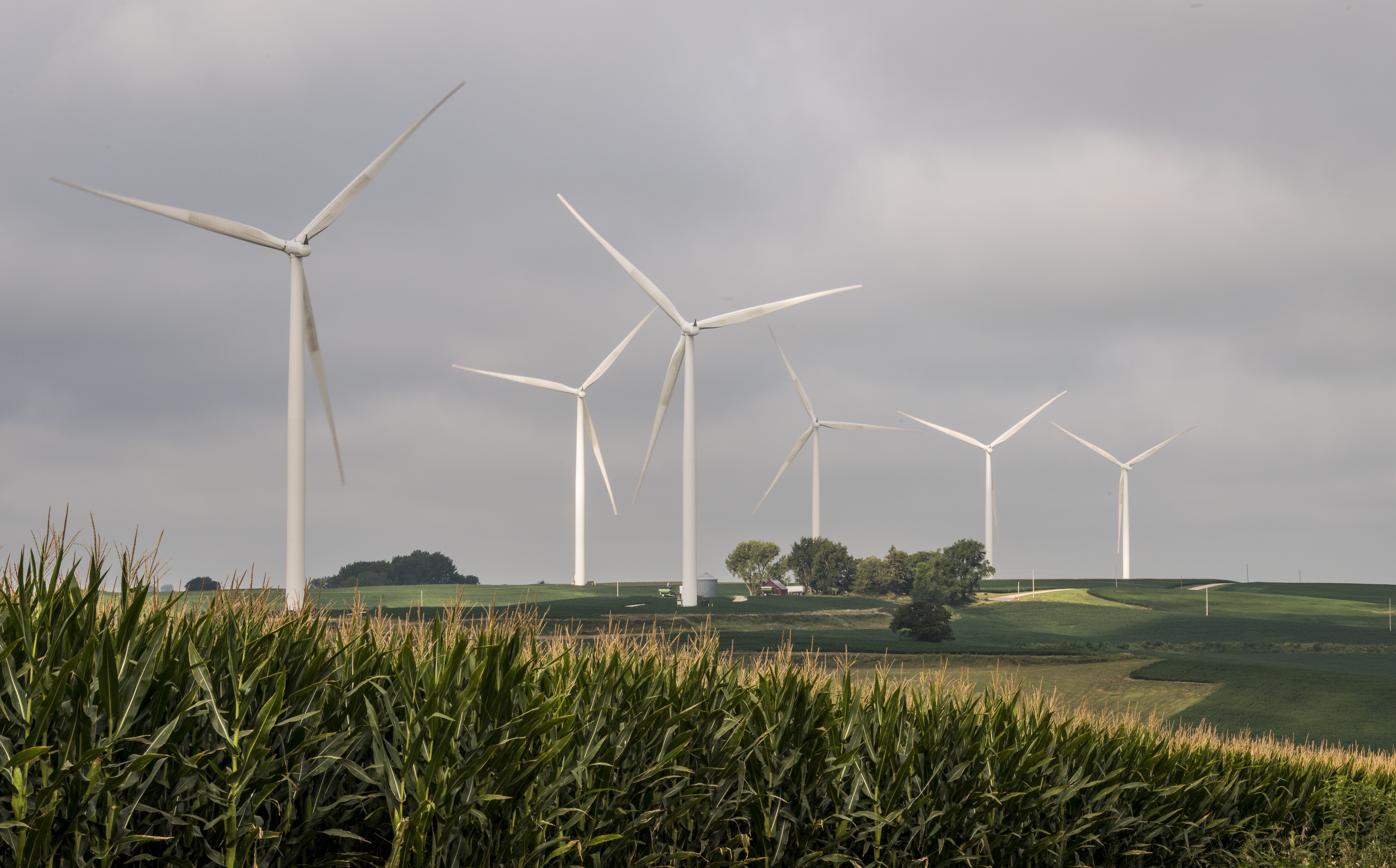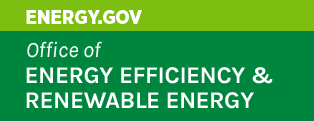Seven Ways Wind Energy Lights a Path to U.S. Energy Independence
July 14, 2023

Whether by providing power to remote locations, supercharging local economies, creating jobs, or supporting a diverse power grid, wind energy offers great promise in helping the United States achieve energy independence. Photo by Dennis Schroeder, National Renewable Energy Laboratory
This article was written for WINDExchange by Tara McMurtry.
The United States celebrates its Independence Day this month. Wind energy offers great promise in helping our nation achieve a different kind of independence: energy independence.
Energy independence means that a nation does not need to import energy sources to meet its energy demands and can meet that demand through locally available and sustainable resources, reducing reliance on imports and foreign energy supplies. The United States, teeming with diverse wind resources both on land and along its coastlines, has the opportunity to leverage this clean and abundant energy source to achieve self-sufficiency in energy production.
As we celebrate our nation’s independence, let’s look at seven ways wind energy is helping the United States achieve energy independence.
1. Wind Energy Is Abundant
From the windswept plains of the Midwest to coastal regions and mountain ranges, the United States enjoys plentiful wind resources, which offer immense potential for wind energy generation. In fact, current estimates show that our nation has 2.2–15.1 terawatts of wind resource potential just on land, which far exceeds current U.S. electricity needs. Offshore wind energy has the potential to cover 3 times our nation’s annual energy consumption. In 2022, installed wind turbines provided enough energy to power 40 million American homes—and more are being installed every year. By harnessing this bountiful, homegrown energy source, our nation can significantly reduce its dependence on imported sources of power and support resiliency in the energy system.
2. Wind Energy Creates Savings
Land-based, utility-scale wind turbines provide one of the lowest-priced energy sources available today.
Using renewable, locally available energy resources, like wind, can reduce communities’ dependence on finite, imported sources or energy that can be affected by price fluctuations. The stability of wind energy translates into savings that can be passed on to consumers.
3. Wind Energy Supports a Domestic Supply Chain
Land-based wind energy in the United States already boasts a mature domestic supply chain, whereas offshore wind energy is poised for a major surge in the coming years. A robust domestic supply chain will be critical to the growth of the emerging offshore wind energy industry. By maintaining our land-based wind energy supply chain and establishing a robust domestic offshore wind energy supply chain, our nation can:
- Engage domestic manufacturing facilities, suppliers to manufacturing facilities, and local construction companies
- Reduce costs associated with transporting wind turbine components and other equipment from overseas
- Enable stronger quality control over turbine parts
- Create new opportunities for skilled trade workers and engineers
- Foster innovation and collaboration among research institutions and industry.
The benefits of a domestic wind energy supply chain can contribute to a robust U.S. offshore wind energy industry, too, which can help reduce our nation’s reliance on foreign sources—not only foreign sources of fuel but also components, labor, and knowledge.
4. Wind Energy Is Key to a Diverse, Secure Power Grid
A diverse power grid mitigates risks associated with overdependence on a single energy source, which is essential to ensuring a reliable energy supply during, for example, surges in energy demand during extreme heat or cold. As a homegrown, plentiful, renewable resource, wind energy can play a vital role in a diverse U.S. power grid and enhance U.S. national security by reducing vulnerability to disruptions, geopolitical tensions, and price fluctuations in global energy markets. It can complement other sources of energy, like solar, for example, and contribute to meeting electricity demand during peak periods. Distributed wind energy, in particular, shows great potential to improve grid resilience through participation in hybrid power systems. By enhancing grid resilience, complementing other energy sources, and helping meet electricity demand, wind energy contributes to a secure, self-sufficient U.S. power grid.
5. Wind Energy Can Power Remote Locations
Unlike some renewable sources that are limited to specific regions, wind turbines can be installed both on land and offshore, opening up a wide range of potential sites for wind farm development. In particular, distributed wind energy, which is produced by smaller wind turbines installed at or near the small towns, farms, businesses, or individual homes they power, can be a big help to remote areas that would otherwise rely on imported sources of energy. For example, the town of St. Mary’s, Alaska, installed a single 900-kilowatt wind turbine in 2019. The turbine produces about half of the town’s electricity and offsets about $355,000 in annual fuel costs. Wind energy’s versatility offers a promising solution for remote areas seeking to reduce reliance on imported energy sources and achieve greater energy independence.
6. Wind Energy Strengthens Local Economies
Wind energy development can create economic benefits at the local level, including:
- Jobs
- Revenue for farmers and ranchers through land lease compensation
- Increased local tax revenue
- Lower electricity prices
- Other community improvements, like road expansion, support for new emergency services, and new community centers and libraries.
By further expanding wind energy infrastructure, our nation can spur job growth for hundreds of thousands of Americans, stimulate local economies, and reduce reliance on foreign energy sources, all contributing to the goal of energy independence.
7. Wind Energy Technology Continues to Advance
Continued advancements in wind turbine technology have improved efficiency and reduced costs, making wind energy an increasingly competitive energy source. Innovations, such as larger turbine blades and taller turbine towers and improved grid integration capabilities, have enhanced the performance and reliability of wind farms. These technological breakthroughs have significantly lowered the cost of wind energy production, making it an increasingly attractive and viable option for achieving U.S. energy independence. Initiatives, like the U.S. Department of Energy Floating Offshore Wind Shot™, are helping drive U.S. leadership in floating offshore wind technology design as well as domestic wind energy development and manufacturing.
Wind energy has the potential to propel the United States toward energy independence by leveraging our nation’s vast wind resources, creating jobs, and bolstering local economies—all while reducing carbon emissions. By embracing the power of the wind, the United States can lead the way in the global transition to renewable energy and secure a brighter, cleaner, more self-sufficient future for generations to come.
Learn how the U.S. Department of Energy Office of Energy Efficiency and Renewable Energy is working to achieve U.S. energy independence by supporting the clean energy transition. Subscribe to the WINDExchange newsletter to get more news stories on wind energy, like this one.
